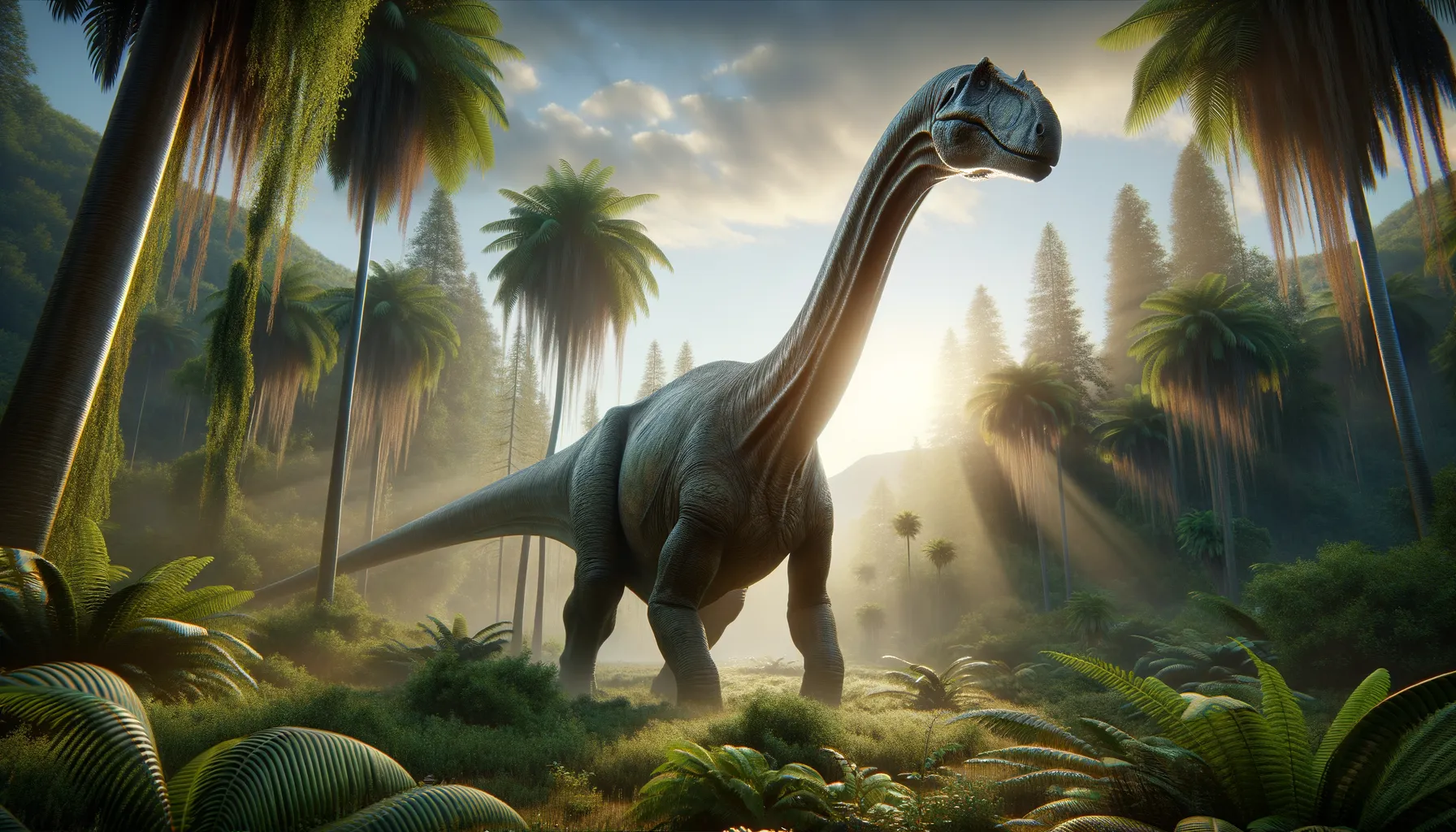
Galeamopus
Jurassic giant with towering presence
Period
Jurassic
Length
Measured up to 80 feet in length.
Height
Could reach heights of around 15 feet at the shoulder.
Weight
Estimated to weigh up to 20 tons.
Galeamopus was a massive, long-necked dinosaur that belonged to the group known as sauropods. These giant herbivores roamed the landscape during the Late Jurassic period, feeding on the lush vegetation of their time. Characterized by their large bodies and elongated necks and tails, sauropods like Galeamopus played a critical role in their ecosystems as mega-herbivores. The fossilized remains of Galeamopus give us valuable insights into the life of these magnificent creatures.
Diet
Galeamopus was a herbivore, feeding on a variety of plant materials. Its long neck allowed it to reach high into the trees for leaves and branches.
Hunting
As a herbivore, Galeamopus did not hunt but grazed on available vegetation. It likely used its height advantage to access foliage out of reach for smaller herbivores.
Environmental challenges
Galeamopus faced environmental challenges such as finding enough food to sustain its large size. Seasonal changes could affect the availability of vegetation. Predation by large carnivores like Allosaurus would also have been a concern, particularly for the young or weak.
Speed
Galeamopus was relatively slow-moving due to its large size.
Lifespan
It likely lived for several decades.
First discovery
First discovered in 1902 in the Morrison Formation.
Fun Facts
- Galeamopus was a long-necked dinosaur that belonged to the sauropod family, known for their massive size and lengthy necks and tails.
- It roamed what is now North America during the Late Jurassic period, around 154 to 150 million years ago.
- The name Galeamopus means 'need helmet', which reflects the Latin roots used in naming this fascinating dinosaur.
- Galeamopus was closely related to the more famous Diplodocus, and they shared many similar features.
- The discovery of Galeamopus expanded our understanding of sauropod diversity during the Jurassic period.
- Fossils of Galeamopus have been found in the Morrison Formation, a rock unit known for its rich dinosaur fossils.
- Galeamopus was an herbivore, feasting on plants and foliage with its long neck to reach high vegetation.
Growth and Development
Galeamopus would have experienced rapid growth in its early years to reach its colossal size. This growth required a substantial intake of nutrients, which the dinosaur could achieve through its plant-based diet. Lightweight bones aided its massive structure in achieving mobility.
Habitat
Its habitat included woodlands and floodplains, where it had access to abundant plant life. The varied vegetation types provided the necessary resources for its herbivorous diet. Waterside areas offered both hydration and potential food sources.
Interaction with other species
Galeamopus likely interacted with other sauropods as well as smaller herbivores. These interactions could involve competing for food resources or coexisting in groups for protection. It may have also faced predation pressure from carnivorous dinosaurs of the same period.
Natural lifespan
Galeamopus would naturally live for several decades barring predation or disease.
Reproduction
Galeamopus likely reproduced by laying eggs, with nests possibly made in secluded or protected environments. Hatchlings would have been vulnerable and required growth to become independent.
Social behaviour
Galeamopus may have moved in herds as a means of protection against predators. Social groupings could also aid in locating food more efficiently. The herd dynamics were likely influenced by the availability of resources and environmental conditions.
Fossil locations
Fossils of Galeamopus have been primarily found in North America's Morrison Formation. The well-preserved remains have provided crucial insights into its anatomy and paleobiology. Findings are concentrated in areas that were once lush floodplains.
